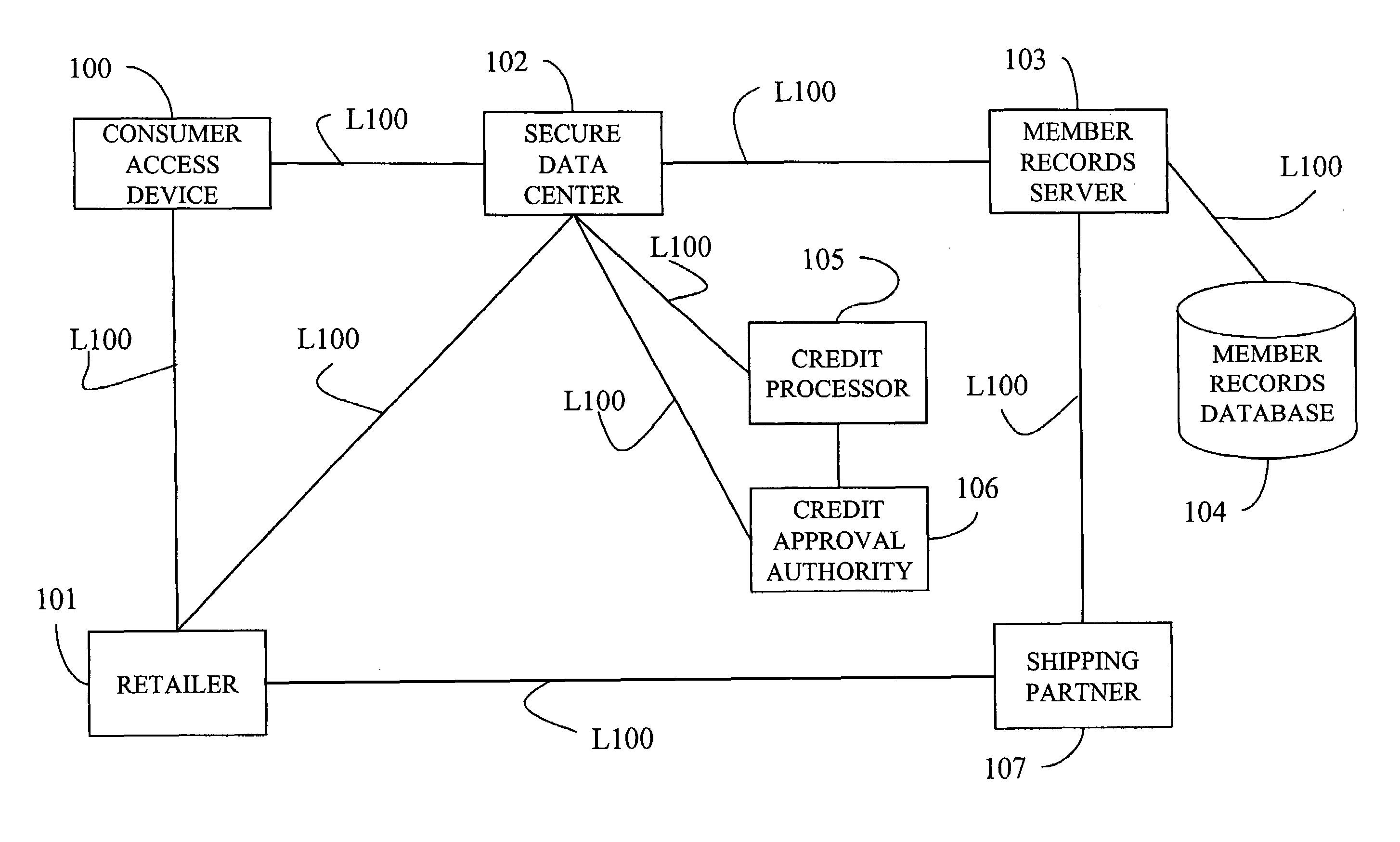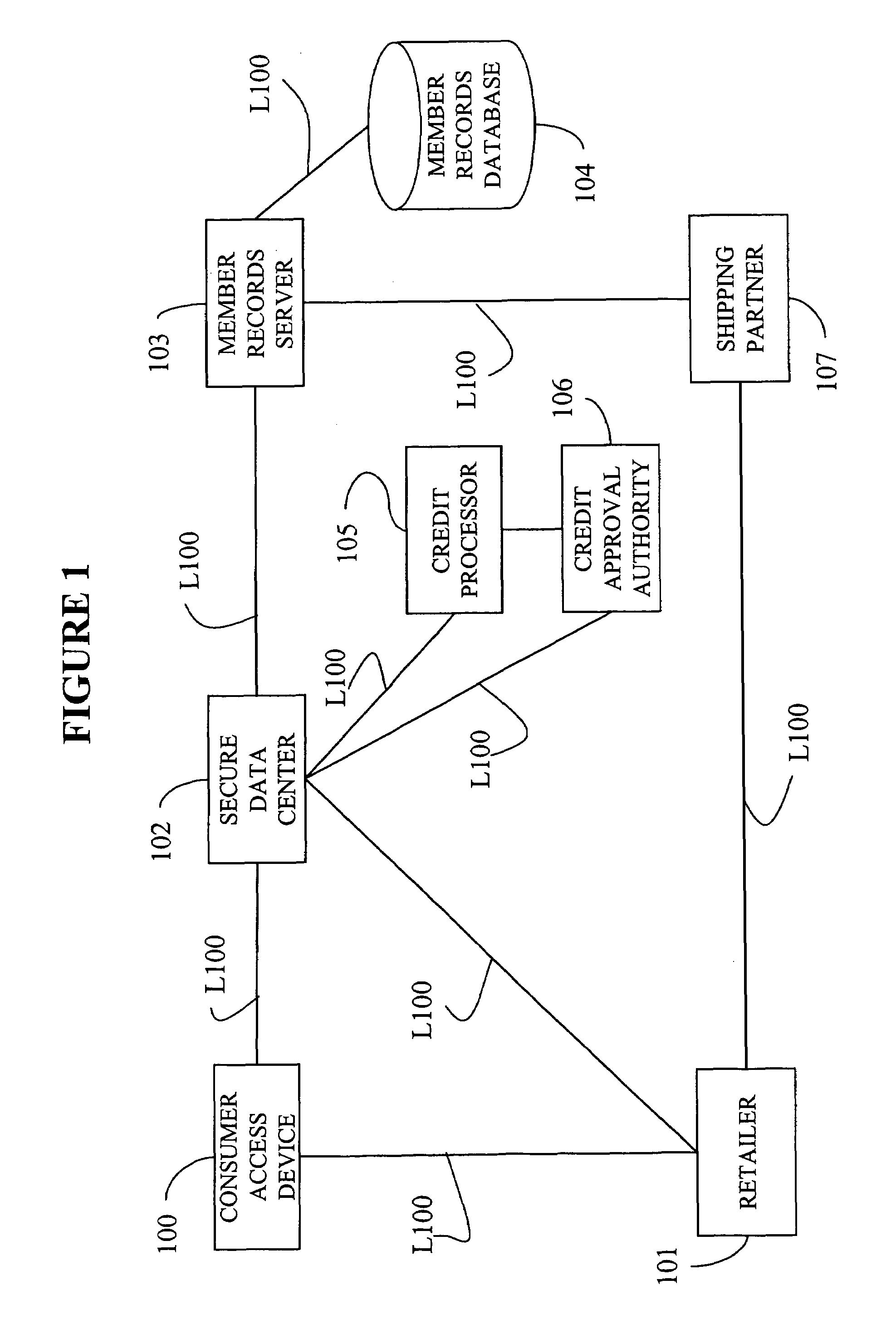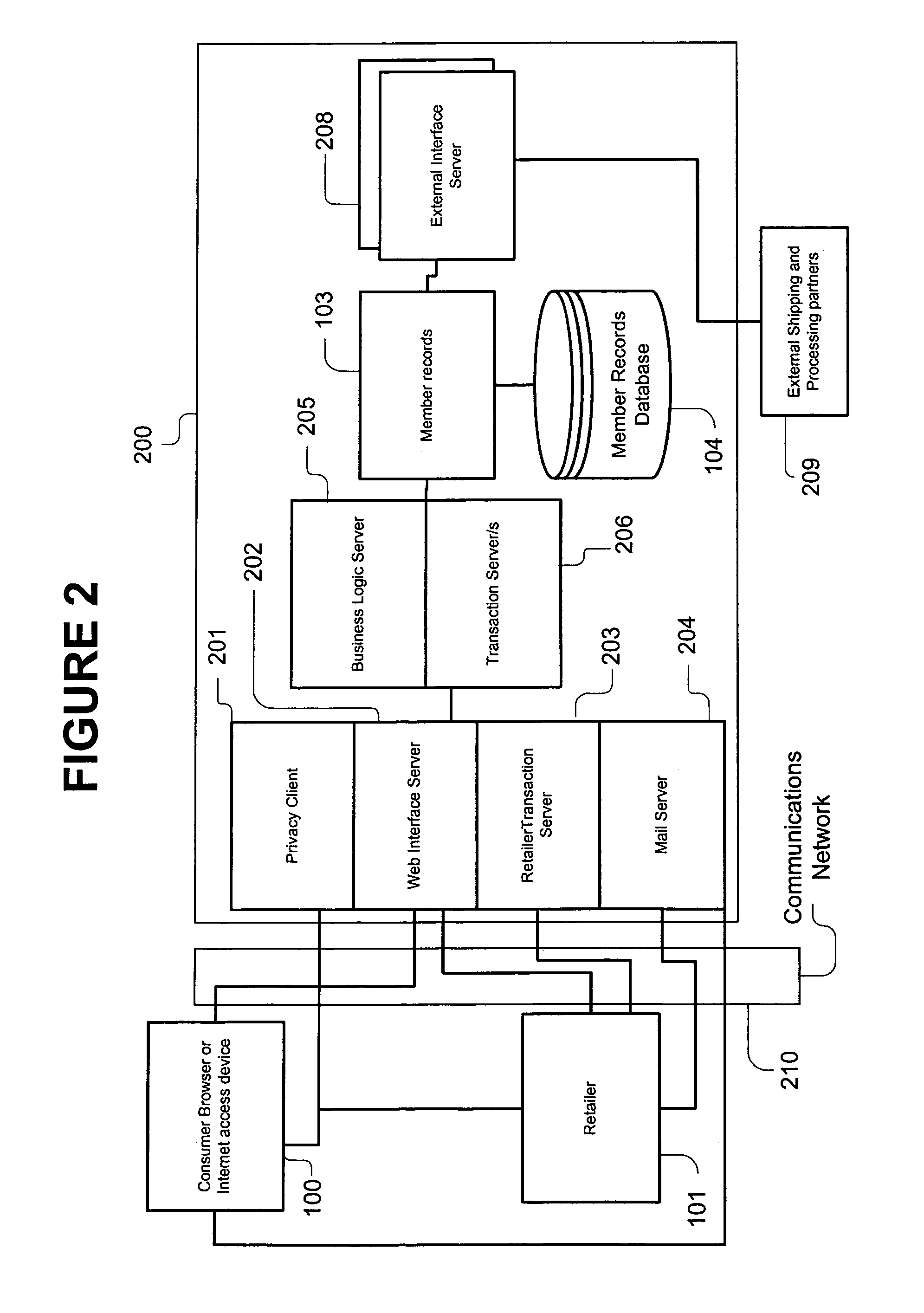[0013]The inventors of the present invention have further recognized that by separating the payment mechanism from the transaction approval process in a commercial transaction, the merchant can complete the transaction once it is has been approved, without being involved with the payment process. By guarantying payment to merchants, the
system of the present invention provides an
advantage of shielding the consumer's identity from the merchant. The inventors of the present invention have developed an approach to commerce that limits the disclosure of a consumer's identity to a single trusted entity and enables that consumer to transact anonymously with many merchants. Moreover, the single trusted entity can accept, with the aid of appropriate payment processors, a wide range of electronic payment vehicles (e.g.
credit card,
debit card, private
label card, electronic check,
micropayment,
bank account, funded cash account, etc.), which provides an
advantage to consumers looking for a range of payment options.
[0015]In one embodiment, the present invention is implemented to allow consumers to purchase anonymously from participating retailers while preserving the financial integrity of the transaction. The present inventors recognized that to provide anonymous purchases and provide complete
privacy protection, all aspects of the transaction had to be secured and protected, including the shipping address or addresses. To protect consumer's shipping information and, ultimately their privacy, the present inventors have developed a novel privacy shipping method. This method includes a trusted third party sending only an
alphanumeric ship-to number to the retailer, as opposed to conventional shipping information such as name, address, etc. The ship-to number is converted into human and
machine-readable (e.g., a
barcode) by a retailer fulfillment processor and then placed on the
package(s) in the order. The retailer then returns
package information (e.g., package weight, dimensions, etc.) to the trusted third party. The trusted third party then forwards translation information to a shipping or pick-up agent. The translation information is used locally by the shipper to determine the destination for the package. The shipper picks up the package, scans the
barcode and, using translation information ‘pushed’ by the trusted third party, determines the destination for the parcel. The ship-to numbers are used for a single transaction (which may in some cases include multiple parcels) only. Accordingly, the inventive
system and methods has alleviated the need for the retailer to ever have the consumer's identity revealed to them.
[0016]The present invention also allows for the
personalization of retailer sites for e-commerce customers of the trusted third party. The present inventors have developed a novel approach for enabling the customization of a retailer site without compromising a consumer's privacy. By providing a
unique identifier for each retailer / consumer pair, consumers may be uniquely identified to a retailer without compromising their identity as to other retailers, since for other retailers, the
unique identifier for that retailer / consumer pair will be different. Accordingly, the present invention provides a solution which enables consumers to experience a rich and tailored web experience while protecting their
anonymity. Further, certain consumers may not wish for customized service. For these consumers, a unique identifier for the consumer / retailer pair will be generated for each purchase.
[0017]The present invention also recognizes the need to protect the
electronic mail address of consumers while maintaining an
electronic mail capability for the retailer to comply with Federal Trade Commission reporting requirements for order and shipping status. Accordingly, the present invention provides a solution which enables retailers to electronically mail notifications to consumers while protecting the consumer's actual
electronic mail address. This electronic e-mail redirection uses the unique identifier for each retailer / consumer pair to enable the retailer to anonymously direct e-mail to the consumer.
[0018]The present invention provides the ability for consumers to shop at participating merchants in complete privacy, not unlike using cash at a
brick and
mortar establishment. The consumer's privacy is maintained even if various merchants attempt to
pool their information in an attempt to harvest additional information regarding their consumers. With conventional third party solutions, as discussed above, a consumer's identity may be ascertained by their common assigned identifier.
[0020]The present invention also provides a novel approach to concealing a consumer's payment vehicle from the merchant. In this way, the use of many varied forms of payment are transparent to the merchant. As the trusted third party becomes enabled for new payment vehicles, the merchants will also be enabled to accept these vehicles for transactions including the trusted third party without the need for costly implementation themselves. By hiding the payment methods from the merchants, the present invention also allows for the implementation of micropayments while maintaining complete privacy of the consumer. Similarly, the present invention allows for members to set up funded cash accounts which can also be used while maintaining complete privacy.
 Login to View More
Login to View More  Login to View More
Login to View More 


